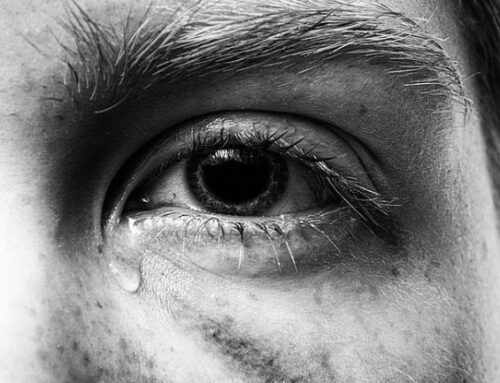Scientific technology can be used to destroy or preserve human life

Geneticist Jerome Lejeune discovered that an extra chromosome was responsible for trisomy 13 (Down syndrome) and hoped his finding would lead to a cure. Instead, it led to eugenic abortions where a majority of babies diagnosed with trisomy 13 are killed in utero.
“It is impossible and it is ridiculous to pretend to stop science,” said Jerome Lejeune, the renowned geneticist best known for discovering that an extra chromosomal copy was responsible for trisomy 21, commonly known as Down syndrome. Lejeune firmly believed in protecting and defending life from the moment of conception, regardless of intellectual ability or physical condition. Lejeune believed there was a “defamation of science” that “today’s scientists are twisting science to give science a horrible aspect. The public is getting afraid about the next discovery of science which will spoil more and more out already partially spoiled world.” When did this fear of science arise and is there reason to be afraid?
Ancient physicians such as Hippocrates (460-371 BC) believed that the embryo began through a series of condensations and fires that formed the bones, stomach, and body circulation. Around 384 BC, the philosopher Aristotle postulated the preformationist theory, that an embryo pre-existed in either the egg or the semen and that it only began growth when stimulated. By the early 1500s, Leonardo da Vinci dissected the human fetus and was the first to provide evidence that embryos changed in size and shape over time.
Through to the 1900s, the human entity was quickly uncovered and many advances helped better manage pregnancies. This included the ability to induce labour and the introduction of epidurals in 1921. Soon after, Scottish physician Ian Donald developed the ultrasound for diagnostic purposes in the 1950s – the technology was first used to discover metallurgical flaws in ships – which allowed an entirely new understanding of the unborn child. During this time, infant survival rates and the point of viability increased dramatically. The problem for using viability as a benchmark for legal personhood for human beings is that it is constantly changing due to advances in medicine. The most premature baby to be successfully delivered to date was at 21 weeks and 5 days (in Ottawa).
 The medical community generally defines viability as the gestational age at which a baby is prematurely born and has a 50 per cent chance of survival. In North America and Europe, viability had declined steadily for a half century before holding relatively unchanged at 24 weeks since the turn of the millennia. As a matter of hospital policy, many doctors do not provide intensive medical care for babies born before viability. But that also reinforces the medical definition of viability by ensuring that babies born before 24 weeks are more likely to die and those after are not. That is as much a moral choice as a medical or technological possibility.
The medical community generally defines viability as the gestational age at which a baby is prematurely born and has a 50 per cent chance of survival. In North America and Europe, viability had declined steadily for a half century before holding relatively unchanged at 24 weeks since the turn of the millennia. As a matter of hospital policy, many doctors do not provide intensive medical care for babies born before viability. But that also reinforces the medical definition of viability by ensuring that babies born before 24 weeks are more likely to die and those after are not. That is as much a moral choice as a medical or technological possibility.
In 1978, the first test tube baby, Louise Brown, was born in Oldham, England, through the procedure in vitro fertilization. Dr. Robert G. Edwards won the 2010 Nobel Prize in Physiology for his development of IVF. Putting aside moral objections, this seemingly pro-life development – the creation of human beings for couples who cannot have children of their own – results in the deaths of untold numbers of tiny human beings. The procedure as commonly practiced employs the creation of “spare” embryonic human beings that are often destroyed when they are not needed for implantation. Because a low percentage of implanted embryos are viable, fertility clinics create extra embryos, many destined for destruction in experiments or to be discarded unused.
In the last few decades, the medical possibilities have only grown. In 1989, Pre-implantation Genetic Diagnosis (PGD) came about, which allowed for the genetic profiling of embryos prior to having them implanted through IVF. This made it possible to select the sex and certain characteristics of the embryo. In 1996, the first animal was cloned from adult cells, Dolly the sheep. In the 1990s, embryonic stem cell research indicated that sparking stem cells taken from embryos – often “leftover” from IVF procedures or cloned from deceased preborn babies – promised unlimited treatment for the worst diseases afflicting humanity (although, as reported in September, the promise has turned out to be mostly hype). By 2001, the first draft of the human genome was completed. It mapped out millions of genes that were once entirely unknown. It lays out the possibility of genetic treatment for a variety of ailments, but also for the possibility of genetic discrimination, if not eugenics.
Before many of these developments, Lejeune said of modern medicine: “This will look like a kind of Frankenstein style of medicine and it will, I am afraid, be rather popular. Just like the horror film except, that on television, the horror medicine will be accepted, I’m afraid, as a kind of distraction to show how powerful we are. This will decrease again the respect we have for the small ones, the young ones, the tiny ones, the unpowerful ones.” He said that in the 1970s and it seems prophetic. Humanity has not heeded his warning.
After discovering the chromosomal abnormality behind trisomy 21, Lejeune’s mission was to find a cure and treat these patients. However, to Lejeune’s despair, rather than using his information to find a cure or treatment, the information was used to selectively abort children with disabilities. Screening during pregnancy has resulted in some 80-90 per cent of preborn children with Down syndrome to be aborted.
Prenatal screening and diagnosis allowed parents to choose whether or not children found to have an abnormality should be given the right to live. The tests can be used to diagnosis a variety of disorders including trisomy 21 and they can be performed as early as the first trimester. However, with all of these diagnostic tests, there are false positives involved and there have been many cases where children claimed to have abnormalities during screening, are born without any disorders. Unfortunately, quite often these diagnostic tests, when they come out positive, result in abortions. Whether it is fear, pressure from outside sources, including family or medical professionals, or simply lack of knowledge, many couples choose to end the life of their child because of a disability. “What is diminishing in the United States is love for those who are unhealthy, small, different from others, and eventually who will not be of any interest in the mathematics of the economy of the United States,” said Lejeune. “It is very extraordinary, very surprising to me that discussions about knowing whether we should kill some children or not are held in this country, which is the richest of them all.”
Prenatal diagnosis also plays a large role in IVF by detecting specific genetic sequences that are linked to different conditions and characteristics. Embryos are selected based on certain characteristics and implanted into the woman’s uterus. PGD began in order to prevent the birth of children with disorders but today PGD is often used for sex-selection and even for cosmetic traits such as eye and hair colour or skin complexion. Many believe that PGD is a form of eugenics. Countless disability rights advocates also criticize PGD and prenatal screening saying that the definition of “disease” is subjective.
There are two types of genetic modifications that are used to change genes, the chemicals that help create the proteins that make up the body, somatic and germ line. Somatic modifications involve changing genes in cells other than the egg or the sperm, whereas germ line modifications change genes in eggs, sperm or very early embryos. Somatic modifications may involve adding or modifying genes in certain cells in order to alleviate a medical condition without affecting future generations. Somatic gene transfer, if made successful, could have important medical applications and help many patients if used with caution. However, germ line modifications result in changes that will be passed on to all succeeding generations, it would open the door to the irreversible alteration of the human species. The practice of inheritable genetic modification (IGM), involving germ line modifications is obviously rife with problems.
Currently in the United Kingdom, the creation of three parent embryos through IVF is being considered by the government. Despite being a germ-line genetic modification, the procedure is being debated because it could eliminate mitochondrial disorders in future generations. Mitochondria are organelles that have their own DNA and act as the powerhouse of a cell. About 1 in 6,000 children have a mitochondrial disease. The procedure would essentially take the nuclear DNA from the mother and father, along with a third donor who would only contribute mitochondrial DNA to the embryo. Concerns regarding this technique include whether this will lead to a slippery slope of further genetic modifications and the fact that this modification would affect future generations (in unknown ways). “The U.K. government is pressing forward with these biologically extreme techniques despite serious safety concerns voiced by scientists, strong disapproval by the public, and their violation of a globally widespread agreement to refrain from human germline modification,” said Marcy Darnovsky, executive director of the Center for Genetics and Society.
With all the negativity that seems to overshadow prenatal testing, it is important to know it originally came about to detect abnormalities in order for them to be treated early and effectively. For example, PKU (phenylketonuria) is a genetic disorder that if untreated, can lead to intellectual disabilities, mental retardation, seizures, and other serious conditions. However, if the disorder is diagnosed early through prenatal screening and treated immediately after birth, it can be effectively treated and allow the infant to grow and develop normally. Today, societal pressure has led to physicians using prenatal testing not to care for the child or find treatment options, but to recommend an abortion. However this is exactly the opposite of what Lejeune hoped to accomplish with his work. In the book Life is a Blessing he stated that medicine “has always fought against sickness and against death, for health and for life. For even when nature condemns someone to death, the physician’s duty is not to execute the sentence, but rather to try to commute the penalty.” Prenatal diagnosis was originally intended to screen disorders that had effective treatments so that it could only be used for good. Today, prenatal testing often serves as a gauge to test the quality of the preborn child and whether he or she lives up to society’s expectations, and if not, to eliminate them.
The aspect of prenatal screening for untreatable disorders such as Down syndrome that is often overlooked is the benefit of knowing early to prepare families and allow them to get the support they need. Perhaps they may be able to better manage the news because they have time to accept it and to ultimately realize they are still capable of loving their child. Melanie, a blogger and mother of a child with Down syndrome recalled her experience with prenatal diagnosis. “Getting a prenatal diagnosis of Down syndrome for our unborn baby was a life altering event. We experienced emotions most people will never feel, and many can never imagine.” She continued: “Many people do not get the opportunity to meet their babies after a prenatal diagnosis – sometimes by their choice, sometimes not. Meeting our baby will take the scariness out of this prenatal journey and leave us loving a baby – not worrying about his diagnosis.” Just as Jerome Lejeune’s discovery could have been used to work toward a cure instead of eugenics, genetic testing need not result in the elimination of preborn children with various illnesses and conditions.
Pope John Paul II in the encyclical Fides et Ratio said, “faith and reason are like two wings on which the human spirit rises to the contemplation of truth.” It is important to note that without science, there would never be diagnostic tests such as the x-ray, MRI, or ultrasound to detect tumours for early treatment of cancer. Without the advances of science, many premature babies would not survive outside of the uterus. Without science vitamins, antibiotics and vaccines would not exist today and countless lives would have ended tragically young.
Science is inherently neither good nor evil. It is we as humans who must find the goodness that science offers, and to fight against the evil humans manipulate it to become. We must strive to follow Lejeune’s example, to use science to preserve and uphold the dignity and value of every human life.
Shauna Jose was a 2014 summer intern with Campaign Life Coalition and The Interim.




